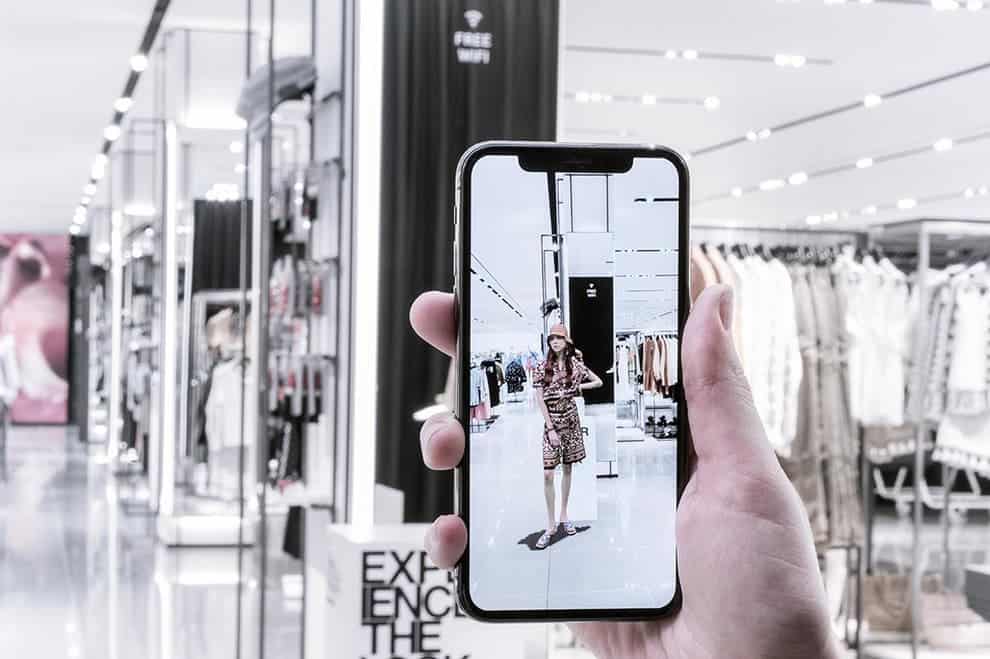From the development of sewing machine to the rise of e-commerce, fashion has always been at the forefront of innovation. This sector is expected to be worth more than US$3tn by the end of 2030, according to CB Insights’ Industry Analyst Consensus, making it one of the world’s most significant sectors.
Fashion technology is now evolving at a faster rate than ever before. Sewing and cutting robots, Artificial Intelligence (AI) algorithms that predict style trends, virtual reality mirrors in changing rooms and online and many other technologies demonstrate how technology automates, customizes, and speeds up the fashion industry.
Digital solutions
The pandemic’s effects have severely damaged the fashion industry, shifting the customers’ mindset, and making them less likely to purchase the latest product offerings while dealing with uncertainty. Therefore, many brands have shifted to digital solutions and new marketing technology to understand better, interact, and communicate with their customers.
As we move into this new era of fashion retail and marketing, technology becomes increasingly crucial and ingrained in the structure of operating a business and brand survival. As a result, brands need to have an innovative and forward-thinking marketing plan.
While the fashion elite continues to focus on next season’s colors and styles, another group of fashion companies is developing technologies that have the potential to revolutionize the future of design and, ultimately, the way we shop for clothing and cosmetics.
Many companies are now collaborating with fashion-focused technology firms, from those providing product life cycle management solutions to those active in garment e-commerce search and Augmented Reality (AR).
AR is very popular
When stores remained shut due to the pandemic, brands and retailers engaged customers through advanced augmented reality (AR) and Virtual Reality (VR) applications that resembled the real-life beauty counter with virtual makeup try-on, how-to videos, live streaming, and beauty masterclasses.
With in-store buying becoming increasingly difficult, fashion firms will need to make their online sites and the shopping experiences they provide to customers as interactive, engaging, and approachable as possible.
According to a Gartner poll conducted in 2018, 46 percent of retailers planned to adopt AR or VR solutions online. This is anticipated to grow much more in 2021 when many retail establishments close.
AR became popular as it allowed e-commerce consumers to try clothes, beauty products, and even jewelry virtually, showing how products look before purchasing.
For example, with only screens in front of them, an AR-enabled virtual makeup software allows shoppers to try on the product and see how it looks on them. Customers can try on and buy entire collections of eyeglasses, lipstick, eye shadow, nail color, jewelry, and even garments without leaving the try-on screen.
Global beauty brands are currently offering plenty of new customer experiences enabled by AR. For example, Sephora’s virtual try-on expertise allows customers to try out whole product combinations to see how they will look in the end.
Likewise, the Maybelline AR tool lets you play around with everything from lipsticks and contours to brow fillers. In addition, the brand even offers a ‘Foundation Shade Finder’ feature to assist you in picking the best-suited product for your skin type.
Also, brides-to-be can now try Tiffany & Co rings using augmented reality, selecting custom Tiffany photo filters to see them in different lighting conditions.
This is made possible by several significant developments around facial recognition, feature tracking, and computer vision. These combine to create the advanced AR applications that almost all global beauty brands are currently investing in.
All of this is enabled due to significant advances in facial recognition, feature tracking, and computer vision. These factors combine to form the advanced augmented reality applications practically all global beauty businesses are currently investing in.
Challenges likely for brands investing in AR beauty tech
The entire premise of a virtual make-up app centers around providing buyers with a product sampling experience that is as near to the actual thing as feasible. So, if the AR application and how it feels to the user are to be widely adopted, they must be perfect.
However, most brands have faced two main obstacles: in real-time, the Lagging Lipstick AR applications must take video, overlay cosmetics at the appropriate locations on the screen, track moving features, and guarantee that the overlay closely follows the correct quality.
If done correctly, you will have the perfect lipstick and winged eyeliner that will stay in place while you gaze at your face from all angles. However, if you don’t do it right, you’ll end up with lipstick that lags on screen even as you move your face.
The second obstacle is obtaining the appropriate product sample.
Again, it’s critical to get the color and feel of each product just perfect across numerous skin types and tones. As a result, the photographs used to make overlays must include all conceivable combinations and reflect the appropriate product texture-shimmer, glossy, matte, and more.

